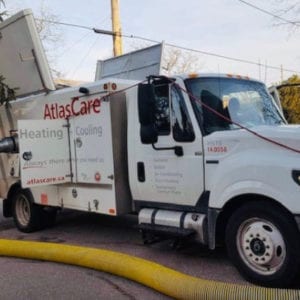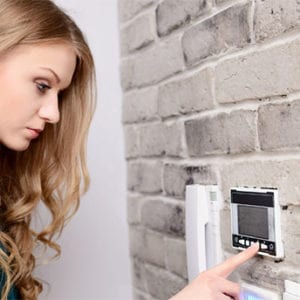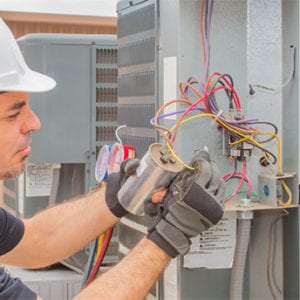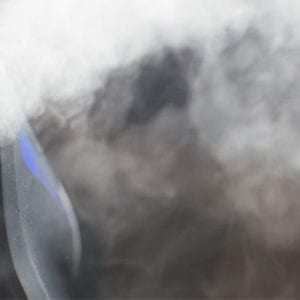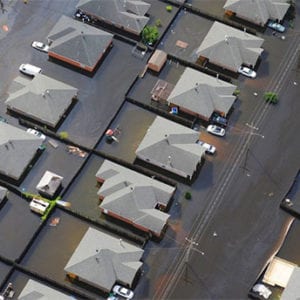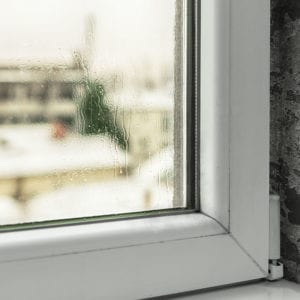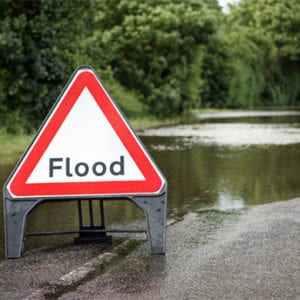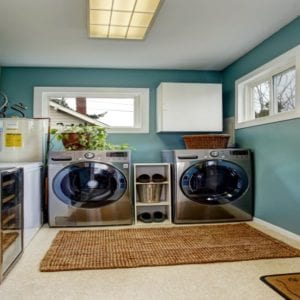The Truth About Air Duct Cleaning – What You Should Know
Duct cleaning. Is it the secret to pristine indoor air quality? An instant cure for your allergy symptoms? Or just another way for contractors to take your hard-earned money?
So many companies market products and services that claim to improve the quality of your air. If you live in the Greater Toronto Area, there’s a very good chance you’ve received countless coupons for one of service in particular: air duct cleaning.
Truth be told, the duct cleaning business has cleaned up its act somewhat in recent years. Gone are the days of people hawking bottom-price duct cleaning services door-to-door, and review sites like HomeStars have made it much easier to vet duct cleaning companies.
But you’re not the only person wondering if duct cleaning is really worth your money. There are still widespread misconceptions about the purpose of duct cleaning, how duct cleaning works, and the results you can realistically expect it to achieve for your home.
We are proud of the work we do in the duct cleaning services, but we’re also the first to tell you that not every home needs to have its ducts cleaned! It’s important that you know the facts about duct cleaning before you decide if you need to book an appointment.
Here, you’ll learn:
- How duct cleaning works
- How long an average duct cleaning takes
- How often you actually need to have your ducts cleaned
- Whether it really gets rid of dust, mold and bacteria
- The potential health benefits
- What a duct cleaning should cost
What is Duct Cleaning and How Does it Work?
Duct cleaning refers to the process of cleaning various parts of your forced-air heating and cooling system to remove dust and other particulates. Along with the air ducts themselves, a complete professional duct cleaning also includes cleaning of:
- Supply and return ducts and registers
- Grilles and diffusers
- Heat exchangers
- Heating and cooling coils
- Condensate drip pans
- Fan motor and housing
To do this, the duct cleaning technician first dislodges contaminants from the surfaces of the HVAC system using brushes, air nozzles and other so-called agitation devices. Next, the loosened particles are collected and removed from the house using a powerful vacuum system.
During this process, the entire HVAC system is placed under continuous negative pressure to prevent particles from escaping into the living space. It essentially creates a suction that forces the contaminants to move in only one direction – which is into the vacuum hose. Some refer to this as negative pressure duct cleaning.
Duct cleaning technicians may also apply a chemical biocide to kill microbes inside the ducts and other components.
Why Do People Have Their Ducts Cleaned?
Your central air conditioning or heating system continuously circulates air between your living space and HVAC equipment. Depending on the size of your home and your HVAC system, the air makes 5-7 full circulations each day.
The system also draws fresh air into your home outside using mechanical ventilation.
As this process repeats on and on, dust particles from inside and outside your house will begin to accumulate inside your air ducts. These particles can consist of everything from dirt and dust to pollen, pet hair, air pollutants, spores and bacteria. The exact makeup of the ‘dust mix’ in your home depends on the age of the house, the climate, your household habits and the number of people living there.
How much dust lives inside your ducts? Again, it depends on the situation inside and around your home. In our experience, the average duct cleaning in the Greater Toronto Area removes between 5 and 6 pounds of dust and debris.
How Long Does Duct Cleaning Take?
It’s hard to say how long a duct cleaning will take without knowing more about your home. The time it takes to clean a home’s HVAC system depends on many different variables, including:
- Size of the house
- Size and number of HVAC components
- Amount of dust build-up
- Number of duct cleaning technicians working on the job
Without this information, it simply isn’t possible to provide an accurate time estimate. Be skeptical of any quote you receive that doesn’t account for these factors!
How Often Is Duct Cleaning Necessary? (According to the EPA)
No one likes the idea of the air they breathe moving through filthy dust-covered passages. If you want to keep your ducts as tidy as possible, we generally recommend having them cleaned about every 3 years.
However, both the U.S. Environmental Protection Agency and the Canadian Mortgage and Housing Corporation agree that you don’t need to have your ducts cleaned on any particular schedule – so it’s not a necessary part of your annual home maintenance routine.
There are, however, exceptions. According to the EPA, agrees that you should have your ducts cleaned or replaced when you notice:
- Excessive Dust
This doesn’t just mean lots dust around your home, but when you see dust coming out of the supply registers. The registers should never be expelling visible dust into your living space. - Vermin
Rodents, insects or other vermin are a serious potential health hazard. If you’ve seen critters in your air ducts, it’s all but certain that there are droppings and remains in the ducts as well. - Water Damage
Water-damaged ducts are a breeding ground for mould. However, you must address the source of the damage and complete the necessary repairs before having the ducts cleaned. - Restricted Airflow
Excessive dust or debris can restrict the flow of air to your furnace or air conditioner. - Mould
Visible mould, slime or any other growth inside the ducts is a cause for concern. Sometimes, the first sign of mould is a musty or earthy odour rather than a visual cue – but in that case, you should confirm the presence of mould first. - Odour
Notice a bad odour originating from the ducts (or any other part of your HVAC system)? It could indicate mould, vermin, or water damage, which need to be addressed.
Does Duct Cleaning Really Help Get Rid of Dust?
When it’s done right, a professional duct cleaning will effectively remove dust from every surface inside your ducts. However, the effect is not permanent. As long as you’re using your forced-air heating or cooling system, the ducts will continue to accumulate dust as before.
Dust is a fact of life. You’ll never banish it from your house completely, no matter how often or thoroughly you clean your house. The same goes for duct cleaning.
The good news is, most of the dust inside your ducts sticks to the surface. It doesn’t all end up in your living space. That’s why we don’t recommend duct cleaning more frequently than every few years.
Does Duct Cleaning Get Rid of Mould and Bacteria?
It isn’t possible to eliminate mould and bacteria by agitating and vacuuming the ducts alone. However, biological contaminants can be removed through the targeted use of biocides and disinfectants. Health Canada’s Pest Management Regulatory Agency (PMRA) does regulate chemical and biological cleaners specifically for use in HVAC cleaning.
At AtlasCare, we have chosen to offer a safe, plant-based disinfectant called Benefect instead of harsh cleaners made from synthetic chemicals. This vent deodorizer kills more than 99.9% of bacteria, mould, and fungal spores while remaining chemical-free and keeping your family safe from toxins longer.
Does Duct Cleaning Leave a Mess?
Provided the job’s done right, duct cleaning should not blow dust into your living space, and there is no evidence to suggest that a professional duct cleaning is detrimental to your indoor air quality. A competent, NADCA-certified duct cleaning company will always take the time to properly seal your vents, keep their duct cleaning equipment clean, and protect your carpeting and household furnishings from the vacuum hoses.
AtlasCare’s Red Carpet Service goes several steps beyond these measures to keep your home as clean as possible: our technicians wear protective booties to keep from tracking in outside dirt and complete each service call by cleaning any leftover debris with an Asthma Society of Canada-approved HEPA vacuum.
Are There Proven Health Benefits to Duct Cleaning?
As mentioned earlier, the dust inside your home is made up of a wide variety of particulate matter, and the typical dust mix includes dirt, dust mites, pollen, hair and pet fur. There’s no reason to believe that a sprinkling of these particles in your air ducts poses any risk to your health. But we do know that these particles can trigger allergies and other symptoms in those who are sensitive to them.
Although dusty air ducts don’t necessarily mean unhealthy air, they can contribute to larger health issues. Dust mites, for example, produce allergens that are known triggers for people with asthma. In fact, dust triggers symptoms in 64% of asthma sufferers. Dust is also among the most common year-round allergy triggers, and many people who have seasonal allergies like hay fever are also allergic to dust mites.
Air ducts can also become contaminated with materials that are harmful to most people, like mould and bacteria. The ducts can become a means of distributing these contaminants throughout the home. Therefore, the EPA recommends having your ducts cleaned after vermin infestation or water damage, or if you see or smell mould.
How Much Does Duct Cleaning Cost?
The short answer is, it depends. The cost of a duct cleaning won’t be the same for everyone.
When someone requests a duct cleaning quote, they usually provide us with some basic information on the size of their house (in square feet), the number of storeys and the number of supply registers. Those facts do have an impact on cost…but it’s not enough to create an accurate, complete cost estimate.
The cost also depends on:
- Your existing HVAC equipment
- Size of your HVAC system
- How easy it is to access the system
- Level of contamination inside your ducts
- Number of team members needed to do the job
- How long the job is expected to take
- Other environmental factors
The last thing we want to do is mislead you on the cost of a duct cleaning based on an incomplete picture of your home. That’s why we only provide cost estimates after we’ve had a chance to speak with you one-on-one.
How to Find a Reliable Duct Cleaning Company
Although the government has cracked down on door-to-door duct cleaning sales, we continue to hear from people in the GTA who have been mislead by cut-rate duct cleaning companies.
In fact, that’s why AtlasCare began offering professional duct cleaning services in the first place – many our heating and cooling customers complained to us about the lack of trustworthy duct cleaning services in and around Toronto.
Wherever you live, there are a few practical steps you can take to make sure you find the best duct cleaning company in your area. Keep these in mind the next time you’re looking for someone to clean your ducts.
- Only hire duct cleaning services from companies and contractors that are in good standing with the National Air Duct Cleaners Association or NADCA. This association is the gold standard for duct cleaning services in Canada and the United States. To become a member, a company must have certified Air System Cleaning Specialists (ASCS) who have passed NADCA’s certification exam on staff. NADCA’s member list should be the first place to look for services in your area.
- Make sure that a service provider agrees to clean all components of your HVAC system, not just the ducts. This is part of NADCA’s standards for a complete and professional duct cleaning. Neglecting to clean the entire system can result in re-contamination, which negates any potential benefits of having the ducts cleaned in the first place.
- Check customer reviews on unbiased, third-party sites like Google, Facebook and HomeStars (Home Advisor in the United States.) Take note of any customers who report high-pressure sales tactics, hidden fees, or claims of problems with their heating and cooling systems after the duct cleaning.
For more information or to book your service appointment, contact our duct cleaning specialists today.

